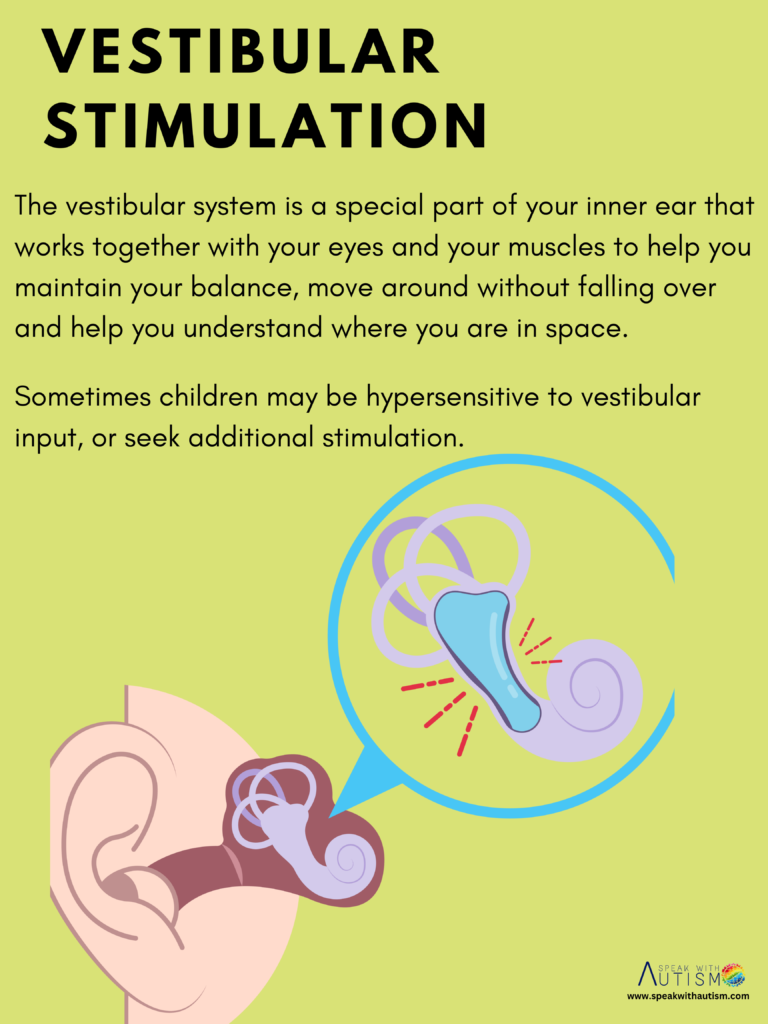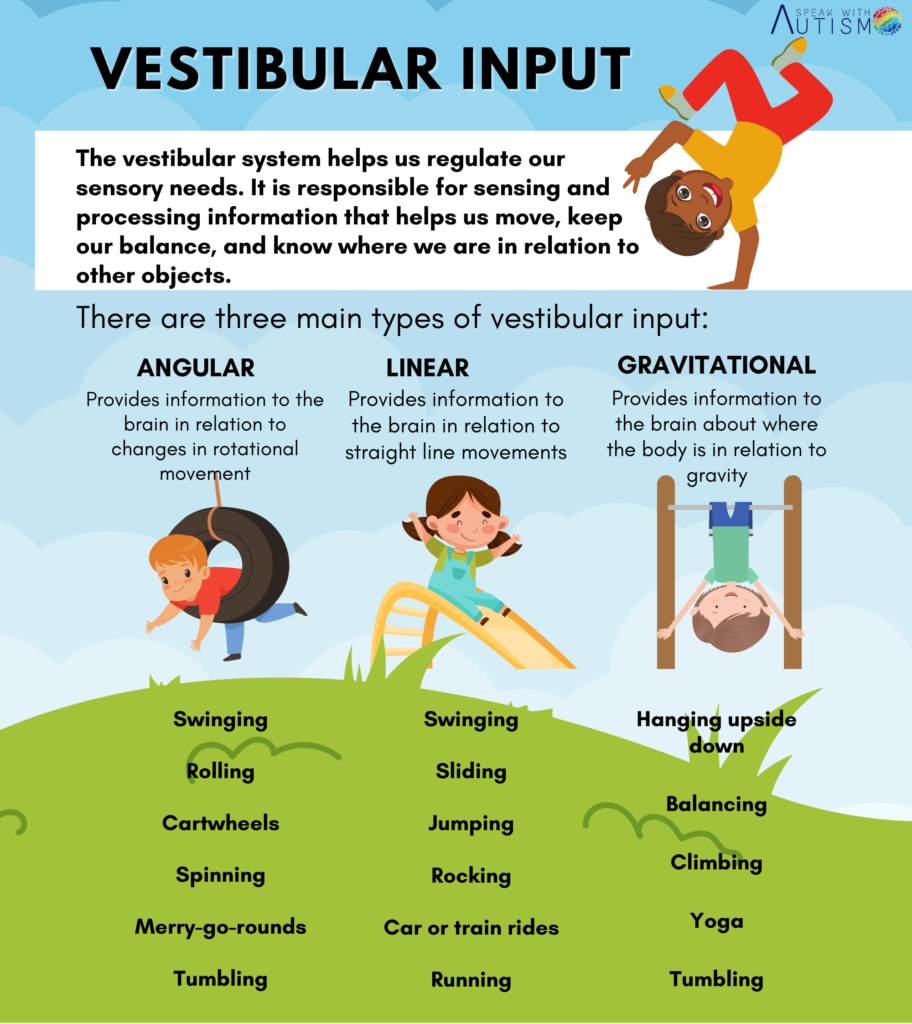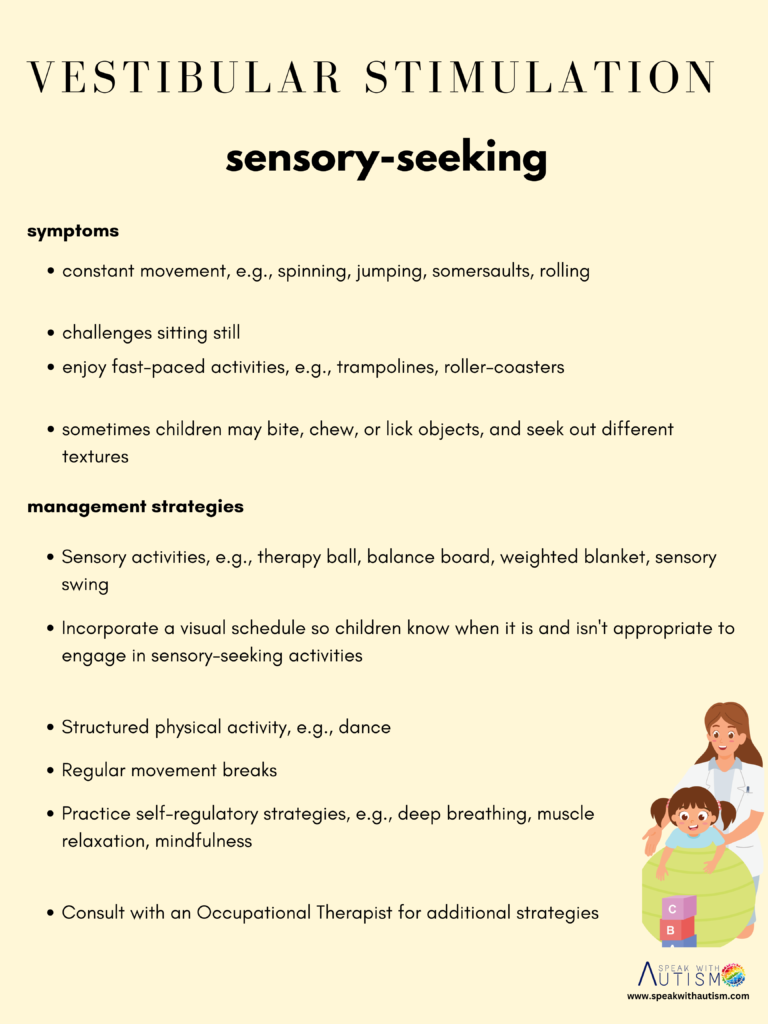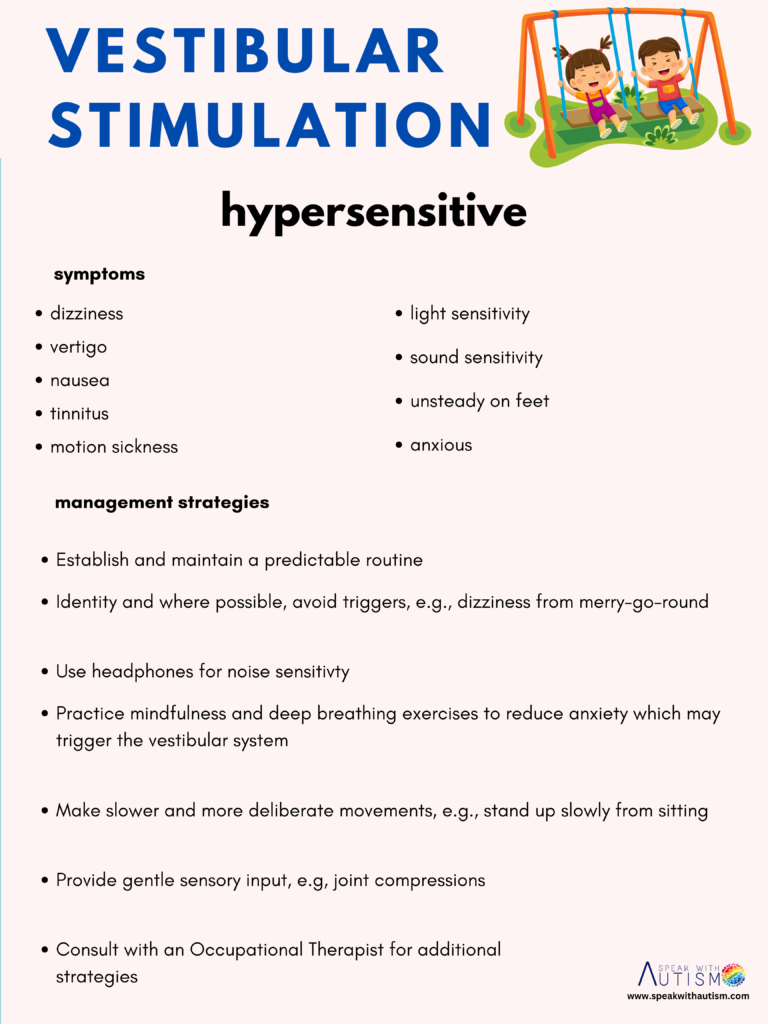The vestibular system is one of the strongest components of the sensory system. If a therapist does not manage this system properly, you may not see effective results in children. It is crucial to understand where the vestibular sensory system is located in our body and how it sends messages to the brain.
So, today, let us first understand how the vestibular system works. The vestibular sensory system is located in our inner ears. It consists of a fluid-filled structure. Similar to how water fills a glass, there are tubes (on both sides of the head) that contain this fluid.
What is the function of this fluid? As the fluid moves, it sends signals to the brain about the position and movement of your head in space. This system helps us maintain balance, posture, and coordination.

Table of Contents
What is the Vestibular input?

- The vestibular sensory system is one of the most powerful sensory systems in our body. Located in the inner ear, it plays a crucial role in controlling balance, posture, and spatial awareness.
How Does It Work?
- The system consists of fluid-filled canals that detect head movements.
- As we move our head, the fluid shifts and sends signals to the brain about our spatial position.
- This mechanism helps us maintain stability and understand our body’s position, even with closed eyes.
Why is the Vestibular System Important for Children?
- It influences core areas such as balance, motor skills, and sensory regulation.
- Proper functioning of this system is critical for a child’s overall development, especially for special children with disorders such as autism, ADHD (attention deficit hyperactivity disorder), and sensory processing disorder (SPD).
Challenges in Hyperactive Children
- Hyperactive children often experience excessive vestibular input due to constant head and body movements.
- This overstimulation can overwhelm the brain, leading to difficulties in focus and regulation.
- Stabilizing their vestibular sensory system helps calm hyperactivity and improve attention.
Challenges in Hypoactive Children
- Hypoactive children receive slow or weak signals from their vestibular sensory system.
- As a result, their brain may struggle to process these signals effectively, leading to delayed responses or inactivity.
- Engaging in activities that enhance vestibular input—such as faster swings or dynamic movements—can help stimulate their sensory system.
Effective Activities to Support the Vestibular Sensory System
- For Hyperactive Children: Use rhythmic bouncing, slow swings, or controlled head movements to help stabilize their vestibular sensory system.
- For Hypoactive Children: Engage in faster swings, sudden movements, or activities like jumping to activate their vestibular system.
- General Activities: Gently lift and sway infants to develop their vestibular sensory system. Encourage older children to participate in activities such as swinging, spinning, or dancing to improve balance and coordination.
The Vestibular System’s Connection to Learning
- This system is closely linked to auditory and visual processing.
- Improving vestibular function can enhance attention, focus, and even handwriting in children with learning difficulties.
- A strong vestibular sensory system also helps children distinguish directions such as left, right, up, and down.
What Parents Should Know


- Hyperactive children may crave fast swings or movement for stimulation, but too much can harm their sensory regulation.
- Hypoactive children need more active and stimulating movements to wake up their system.
- Always ensure safety during these activities, especially when using swings or balance equipment.
Conclusion
The vestibular sensory system plays a crucial role in regulating hyperactivity, hypoactivity, and sensory challenges. By focusing on this system, we can enhance not only balance but also attention, learning, and emotional stability.
FAQs (Frequently Asked Questions)
What is the Vestibular system?
The vestibular system is a sensory system responsible for maintaining balance and spatial orientation. It is located within the inner ear and contains fluids that detect head movements. These movements are then communicated to the brain, helping us maintain stability and awareness of our position in space.
What is the position of the Vestibular system?
The vestibular system is located within the inner ear, specifically in a part called the labyrinth. It consists of fluid-filled structures, including the semicircular canals and otolith organs, which are responsible for detecting head movements and maintaining balance. These structures send signals to the brain, helping us understand our position in space and maintain stability.
How does the vestibular sensory system work in hyperactive children?
In hyperactive children, the fluid of the vestibular system moves rapidly due to excessive movements of the head and body. This sends high sensory input to the brain, which sometimes overloads the brain and the child becomes even more hyperactive.
What should be done for hyperactive children?
To stabilize the vestibular system of hyperactive children, slow and rhythmic activities should be done, such as:
Slow swinging
Rhythmic bouncing (on gym ball)
Controlled head movements
These activities calm their vestibular system and reduce hyperactivity.
What is the problem in the vestibular sensory system of hypoactive children?
In hypoactive children, the fluid of the vestibular system moves slowly, due to which sensory messages reach the brain slowly or incompletely. This creates slow responses and coordination problems in children.
What should be done for hypoactive children?
Fast-movement activities are useful for activating the vestibular sensory system of hypoactive children, such as:
Fast swinging
Sudden movements (such as games that involve lifting them in the air and rotating them)
Jumping or spinning games
These activities stimulate the vestibular sensory system and help send sensory messages to the brain.
What is the connection between the vestibular system and learning disabilities?
The vestibular system is connected to listening, vision, and attention. If this system does not work properly, children may have learning disabilities, poor concentration, and coordination problems.
What can parents do to improve the vestibular system?
Parents can do the following things:
Have children exercise on safe swings and gym balls.
Involve them in rhythmic movements and balance-related activities.
Pay attention to controlled movements in daily activities.
When is the development of the vestibular system important?
This system begins to develop at the age of one year and regular movements and balance exercises are necessary for proper development.
How are the swings of hyperactive and hypoactive children different?
Hyperactive children should be given slow swings which stabilize their vestibular system.
Hypoactive children should be given fast swings which activate their vestibular system.
